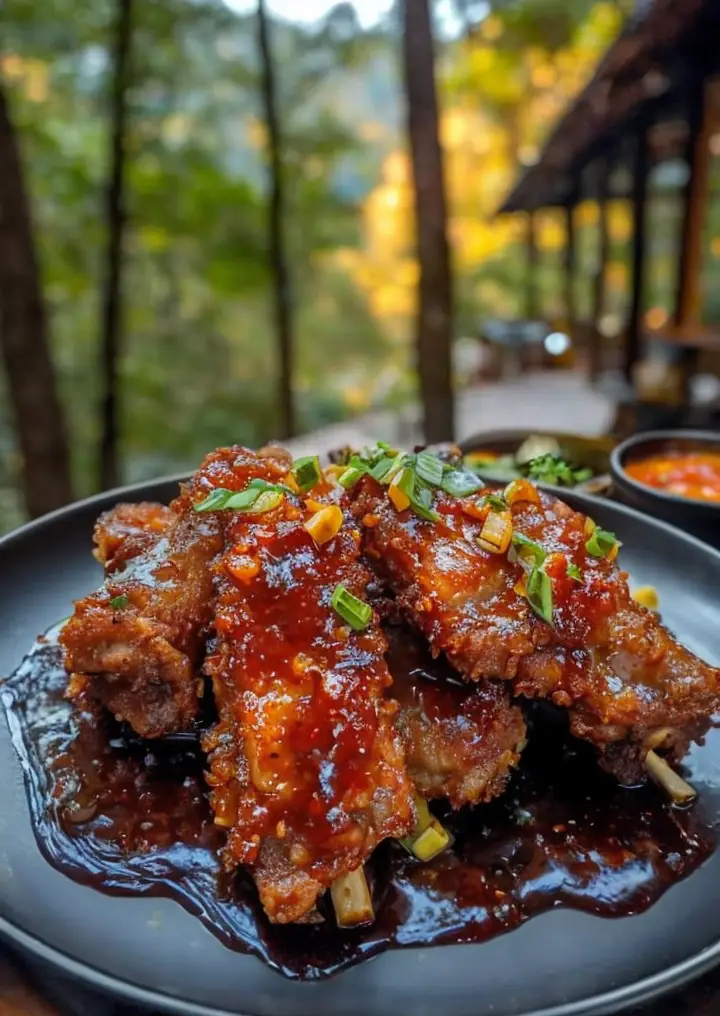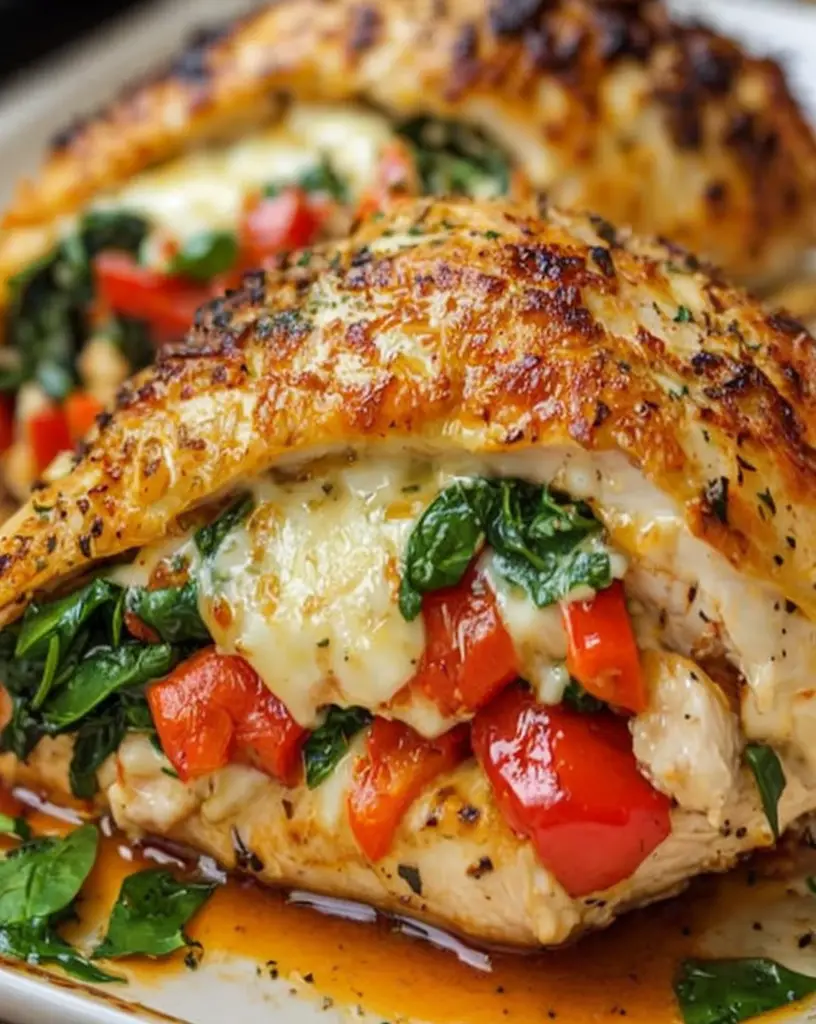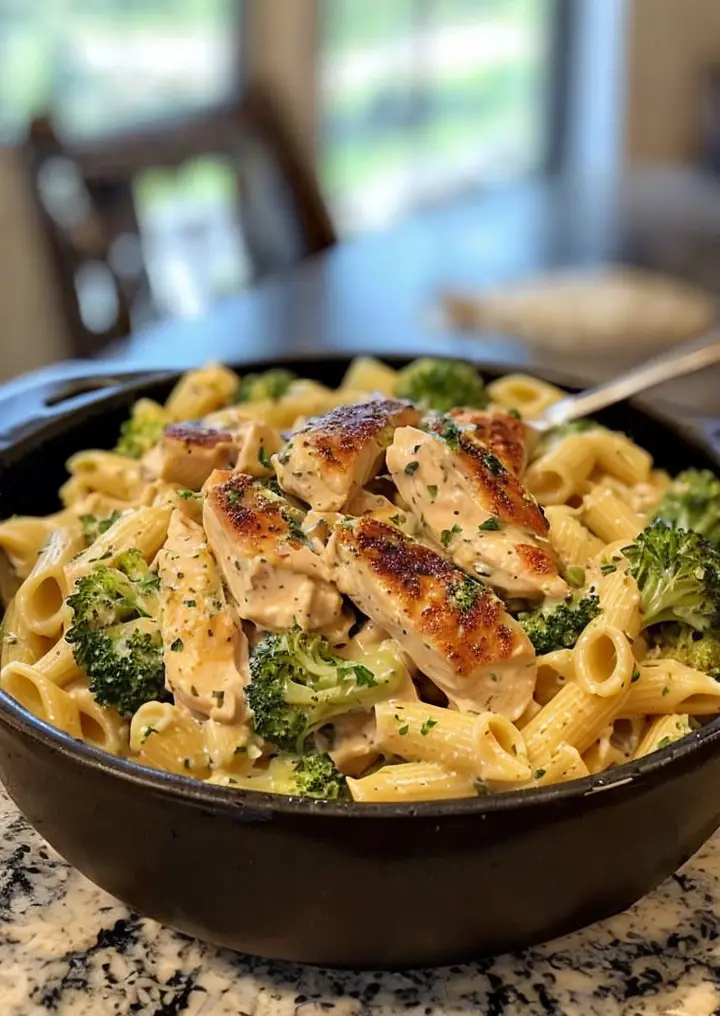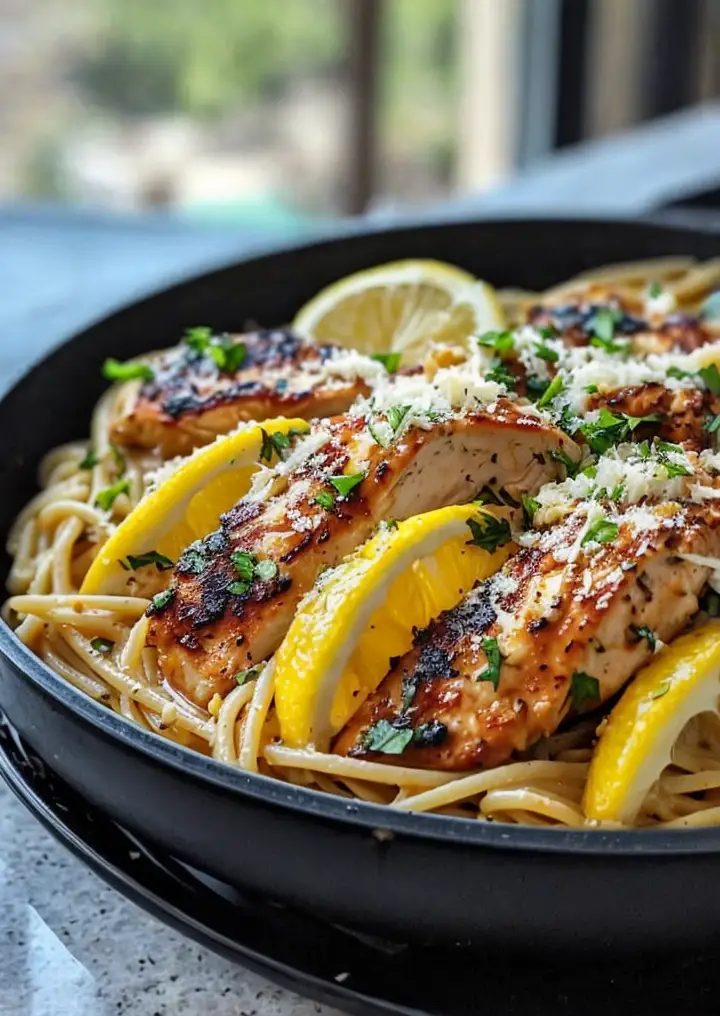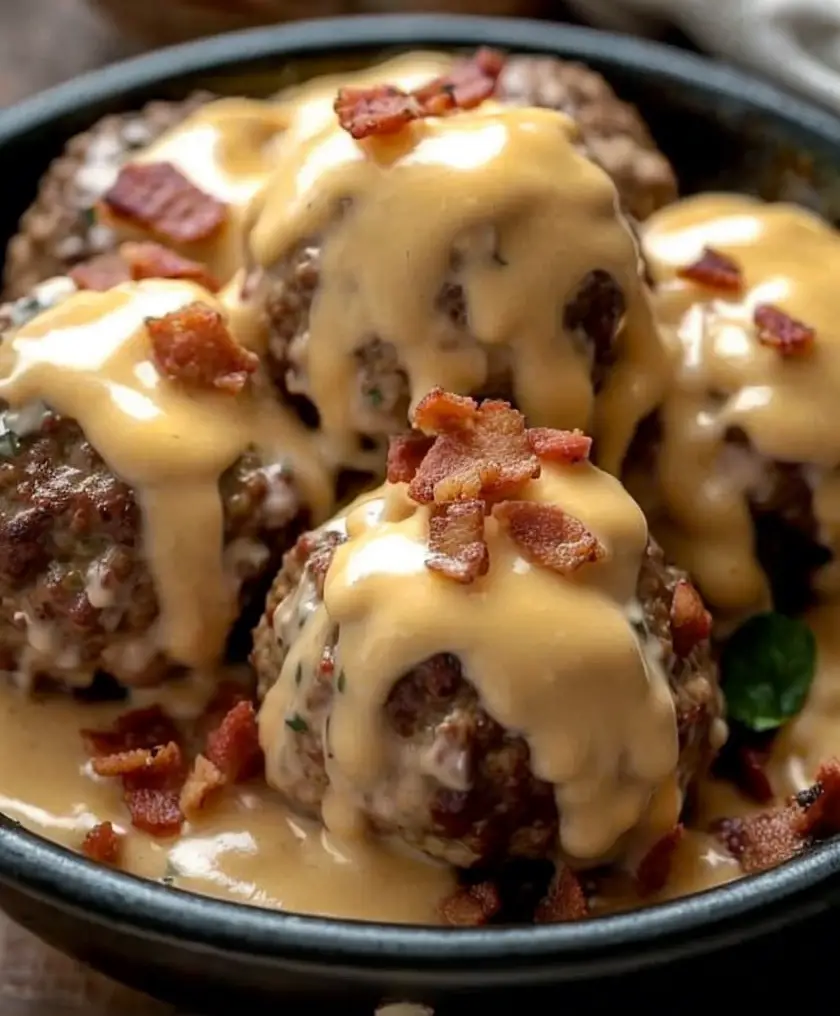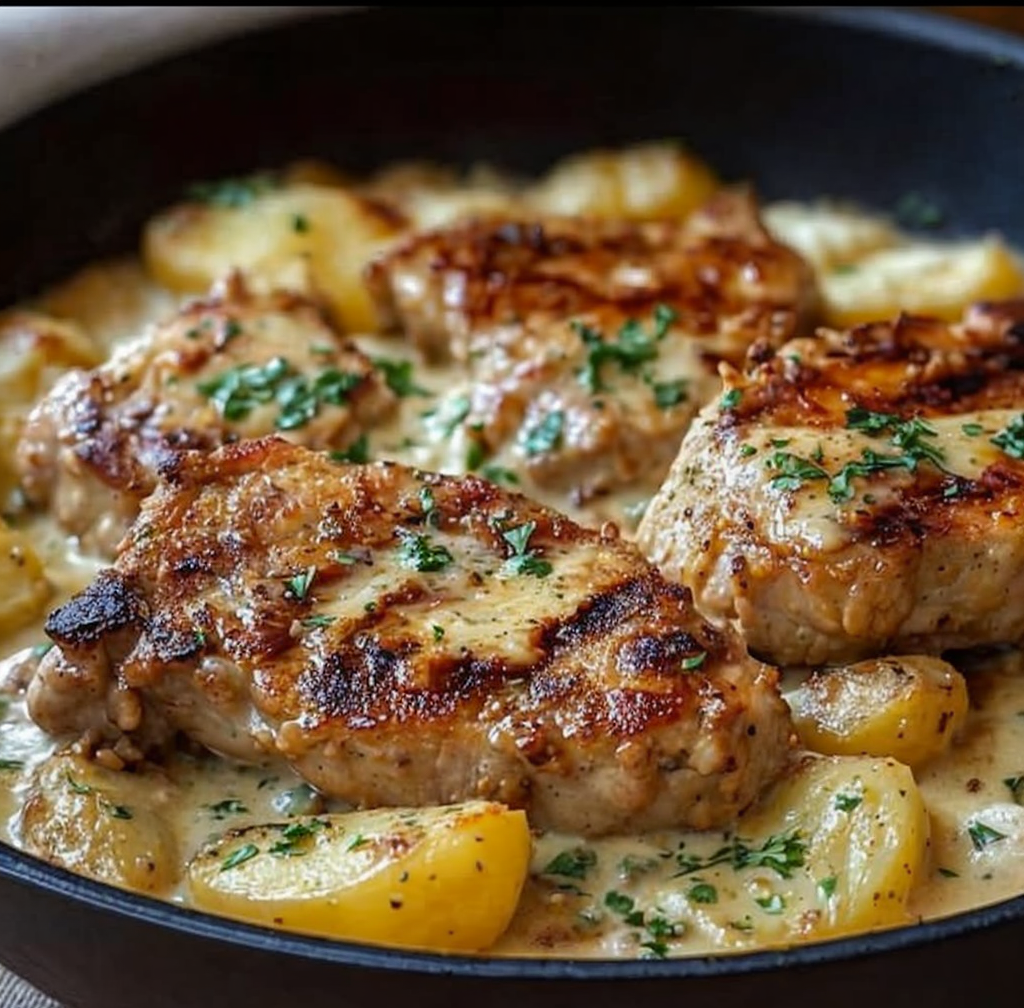Crispy Deep Fried Spare Ribs: A Flavor Explosion You Can’t Resist!
Are you ready to indulge in a dish that will tantalize your taste buds and make your dining experience unforgettable? Our Crispy Deep Fried Spare Ribs are not just any ordinary ribs; they are a celebration of flavors, textures, and aromas that you won’t want to miss. Imagine sinking your teeth into perfectly cooked, tender meat enveloped in a crunchy, golden crust, delivering a burst of juicy flavor with every bite. This dish is an ultimate comfort food that promises to be a star at any gathering or family meal.
The harmony of sweet, savory, and slightly spicy seasoning enhances the inherent richness of the pork, creating a satisfying taste that lingers on your palate. The crispy coating adds a delightful crunch, contrasting beautifully with the tender meat inside. Perfect for casual get-togethers or special occasions, this recipe is bound to leave your guests asking for seconds and taking notes for home cooking.
Quick Recipe Highlights
- Flavor Profile: The sweet, smoky, and slightly spicy marinade of these ribs infuses each bite with a savory depth, making it absolutely delectable.
- Texture: The ribs are marinated to ensure tenderness, then coated and deep-fried until they achieve a satisfying crunch, giving you the best of both worlds.
- Aroma: The mouthwatering scent of marinated pork and spices drifting from your kitchen will have everyone on their toes in anticipation.
- Visual Appeal: Crispy Deep Fried Spare Ribs are visually stunning with their glistening, golden-brown crust that is hard to resist.
- Skill Level Needed: Only a moderate level of cooking skill is necessary, making this recipe perfect even for the novice chef eager to impress.
- Special Equipment: A deep fryer or heavy pot is needed for achieving the best frying results. A thermometer will also ensure your oil is at the perfect temperature for frying.
Recipe Overview
- Difficulty Level: This dish requires a medium difficulty level due to the marinating process and the specifics of deep frying, which can take a bit of practice to perfect.
- Category: These Crispy Deep Fried Spare Ribs fall under main course dishes, perfect for a hearty lunch or dinner option.
- Cuisine: Inspired by Asian and American BBQ traditions, this recipe reflects a fusion of techniques and flavors that are universally loved.
- Cost: Budget around $15-$20 for all the ingredients to serve a family of four, making it a cost-effective choice for entertaining.
- Season: These ribs are great to enjoy year-round, particularly during summer barbecues and family gatherings.
- Occasion: Perfect for casual gatherings among friends, family parties, and even holiday feasts where you want to impress your guests.
Why You’ll Love This Recipe
Imagine a gathering with friends, laughter, and conversation, all while indulging in the wonderful flavor of Crispy Deep Fried Spare Ribs. Each bite gives a satisfying crunch followed by tender, juicy meat, making it a dish everyone will cherish. The spice blend used in the marinade not only enhances the taste but also provides a nostalgic feel, often recalling cookouts and friendly get-togethers.
This recipe is incredibly convenient to prepare. After a simple marination process, the time spent cooking is relatively short. You can enjoy a delicious meal without demanding hours of hands-on work in the kitchen. Additionally, cooking deep-fried spare ribs allows you to batch-cook and freeze extras for later, ensuring you can easily serve up your famous ribs unexpected visits.
Nutritionally, while indulgent, pork ribs provide protein along with important vitamins and minerals. This dish balances well with a light side salad or steamed vegetables, allowing for a hearty yet nutritious meal. You could even complement it with rice or noodles to incorporate more healthful carbohydrates.
Crispy Deep Fried Spare Ribs are also a fantastic choice for social gatherings, sparking joy and conversation as guests gather around the table. Sharing delicious food fosters connection, making it a wonderful centerpiece for any meal. Plus, the sheer deliciousness makes for a great memory among friends and family.
Lastly, the cost-effectiveness of this recipe cannot be overlooked. With simple, widely available ingredients, you can whip up a beautiful and fulfilling meal without breaking the bank. It’s an accessible cuisine for all, while still offering a gourmet feel.
Historical Background and Cultural Significance
The origins of spare ribs trace back centuries, with different cultures boasting their own variations that reflect local customs and ingredients. Pork ribs are especially beloved in regions blessed with rich agricultural landscapes, providing an ample supply of pork. As methods of cooking evolved, the art of deep frying emerged, becoming a beloved preparation style for meat dishes around the world.
Culturally, ribs represent more than just a meal; they symbolize gatherings, grilling tradition, and hearty feasts. In many cultures, enjoying grilled or fried ribs signifies celebration and community, often seen at barbecues and festive occasions. The evolution of this recipe showcases the globalization of flavors, drawing inspiration from Asian spices and American BBQ techniques to create something uniquely delicious.
As cuisines intermix, regional variations of deep-fried ribs have emerged, with each locale adding its twist to the preparation and flavor profile. From spicy Korean gochujang flavors to sweet-and-sour variations found in Chinese cuisine, spare ribs continue to diversify and innovate.
The enduring appeal of ribs ensures their continued significance in culinary history. They have remained a constant favorite, heralded in cookbooks, restaurants, and home kitchens, celebrated for their ability to bring people together around the table.
Ingredient Deep Dive
The main ingredient in our Crispy Deep Fried Spare Ribs is, of course, pork ribs. Pork’s significance in various cultures cannot be understated; it is often celebrated for its rich flavor and versatility. Nutritionally, pork ribs are a good source of high-quality protein, essential for building and repairing body tissues. When choosing ribs, opt for well-marbled cuts, as these will yield the most flavor and tenderness.
Marinades play a crucial role in flavoring the ribs. A mixture of soy sauce, honey, garlic, and spices ensures a robust flavor profile, enhancing the meaty goodness of the ribs. When selecting spices, fresh options prefer, those spices provide the best aroma and flavor. Store spices in a cool, dark place to maintain potency and consider alternatives like liquid smoke to infuse unexpectedly grilled flavors if needed.
Oil is another key ingredient for frying. A neutral oil with a high smoke point, such as canola or vegetable oil, ensures crispy results without overwhelming the dish’s flavors. Check for freshness before use and store oils in a cool environment to prolong shelf life.
Common Mistakes to Avoid
- Not marinating long enough: Marination enhances flavor penetration, so allow time for the best results.
- Using the wrong oil temperature: Ensure your oil is heated to the right temperature (around 350°F) for crispy outcomes.
- Crowding the fryer: Fry in small batches to maintain the oil temperature and ensure even cooking.
- Skipping the drying step: Pat ribs dry before frying to achieve that irresistible crispiness.
- Not checking the doneness: Use a meat thermometer to avoid overcooking or undercooking your ribs.
- Inadequate seasoning: Make sure the marinade is balanced, adjusting for sweetness, salt, and spice.
- Failure to leave space for frying: Ensure there’s enough space between each rib to avoid steaming instead of frying.
- Ignoring resting time: Allow fried ribs to rest on a wire rack to maintain crispiness.
- Using old ingredients: Ensure all ingredients are fresh for maximum flavor and safety.
- Not monitoring cooking time: Keep an eye on the ribs while frying; they can quickly go from golden to burnt.
Essential Techniques
Deep frying is an essential technique for achieving that perfect crisp on spare ribs. It involves immersing food in hot oil, cooking quickly while sealing in moisture. Mastering the perfect frying temperature is key; too hot can burn the coating while too low will result in greasy ribs. A thermometer helps maintain consistency. Visual cues include a golden brown color and a satisfying crunch when biting into the meat.
Marinating is equally important, allowing flavors to penetrate the meat and ensure juiciness. Ensure ribs are fully submerged in marinade for even flavor distribution. Time is essential—allow the ribs to marinate for at least 4 hours, preferably overnight, for maximum taste infusion.
Brining is another technique that enhances flavor and moisture retention; soaking the meat in a saltwater solution increases juiciness and infuses flavor. A brine with added spices can elevate your ribs to new heights.
Pro Tips for Perfect Crispy Deep Fried Spare Ribs
Use a meat tenderizer to ensure even cooking. This technique promotes even tenderness throughout the meat, leading to better flavor and texture.
Rest ribs after frying on a wire rack; this will keep them crispy by allowing excess oil to drain away rather than sitting in it.
Consider double frying for even crispier ribs. Frying them once, resting, and then frying again creates a crunch that’s truly irresistible.
Use high-quality oil for frying; this can significantly impact the flavor and crispiness of the finished dish. Fresh oil results in clearer last-minute frying.
Experiment with seasoning in the batter; creative combinations can enhance your rib’s unique flavor.
Let the fried ribs cool briefly before serving, as they will continue to cook slightly, ensuring the best texture for enjoyment.
Variations and Adaptations
Regional variations of deep-fried spare ribs can include different spice blends and marinades. For instance, you can explore a smoky BBQ rub for a thicker crust that adds a distinct Southern flavor. Seasonal adaptations, such as adding autumn spices during the fall, can offer a unique twist based on time of year.
For dietary modifications, consider an air fryer version for a healthier alternative that retains crispy texture without full deep frying.
Flavor variations such as adding lime zest or ginger to the marinade can brighten the flavors and create a new palate experience.
Texture modifications can involve experimenting with the coating—switching breadcrumbs for crushed nuts can offer a delightful crunch in addition to flavor.
Presentation alternatives could include serving with vibrant dips or salsas on the side to engage the visual aspect of your dish, enhancing the dining experience.
Serving and Presentation Guide
When serving your Crispy Deep Fried Spare Ribs, aim for an eye-catching arrangement on a large platter, garnished with fresh herbs or sliced vegetables. This not only looks appealing but encourages family-style dining.
Consider using sauces for dipping or drizzling over the ribs, such as sweet chili or homemade BBQ sauce. This adds a dimension of flavor and can elevate the presentation.
Utilize colorful side dishes, such as a vibrant salad or roasted vegetables, to create contrast and balance the richness of the ribs.
Temperature is crucial; serve as soon as possible after frying for optimum crispiness.
For portion control, introduce individual plating for guests or serving them family-style, encouraging a shared experience while reducing waste.
Wine and Beverage Pairing
When it comes to wine pairings, consider a bold red wine like Zinfandel, which complements the smoky, rich flavors of the ribs perfectly. Alternatively, a fruity Merlot can add a nice contrast to the savory notes.
For non-alcoholic alternatives, try sparkling apple cider or iced tea with a squeeze of lemon for refreshing accompaniment.
If coffee is more your style, a rich, dark roast can balance the meal’s bold flavors while providing a delicious conclusion to the meal experience.
When serving beverages, ensure they are chilled appropriately. Serve white wine crisp and cold, while red wine can be slightly cooler than room temperature, enhancing the drinking experience.
Storage and Shelf Life
To store your Crispy Deep Fried Spare Ribs, refrigerate them in an airtight container for about 3 to 4 days. For longer storage, freezing is a great option–wrap individual portions in plastic wrap and place them in a freezer bag to prevent freezer burn.
The ideal temperature for storage should be below 40°F in the refrigerator and below 0°F in the freezer. Always label your containers with dates for easy reference.
Signs of spoilage include a sour smell, discoloration, or a slimy texture—discard any ribs that exhibit these characteristics.
For reheating, an oven or toaster oven is the best method to retain crispiness; reheating on high heat for a short time helps regain the crunch that makes these ribs so delightful.
Make Ahead Strategies
One of the best features of this recipe is the ability to prepare marinated spare ribs ahead of time. You can marinate them overnight, ensuring deep flavor without the last-minute rush.
Store the marinated ribs in a large, resealable bag, removing as much air as possible to avoid oxidation, sealing in the marinade’s effectiveness.
When frying, you can prep the batter in advance as well, storing it in the refrigerator to save time on cooking day. Just give it a stir before using.
Bringing along fresh elements like salads or dipping sauces can elevate the meal while keeping it fresh. Prepare these a day in advance for added convenience.
Each of these strategies will maintain the quality of your dish and decrease time spent in the kitchen during busy evenings.
Scaling Instructions
Scaling the recipe is simple, whether you want to halve or double the portions. For halving, reduce all ingredients and cooking time proportionately, maintaining the same quality.
Doubling or tripling the recipe requires more attention to cooking times and possibly larger cooking equipment. Ensure enough frying oil is available to accommodate increased batches.
Consider the size of your frying vessel; if necessary, split the frying into batches to maintain proper temperature and texture.
When scaling, also adjust any accompanying side dishes or garnishes proportionately to create a balanced meal.
Additionally, remember to consider storage needs for leftovers if you’re preparing more than your usual amount.
Nutritional Deep Dive
Crispy Deep Fried Spare Ribs provide a substantial source of protein, essential in building muscle and maintaining bodily functions. With approximately 20-25 grams per serving, they support weight maintenance and growth.
In terms of micronutrients, ribs offer minerals like zinc and iron, vital for immune function and maintaining healthy blood levels.
While delicious, it’s important to enjoy these ribs in moderation due to their higher-calorie content, typically around 400-500 calories per serving.
Pairing with vegetables or salads adds nutrients and fiber, balancing the overall meal. Portion control is crucial while maintaining the integrity of the dish.
For those managing dietary goals, consuming these ribs alongside healthful sides further aligns meals with mindful eating.
Dietary Adaptations
For a gluten-free version of Crispy Deep Fried Spare Ribs, swap regular soy sauce for tamari, ensuring that the marinade remains gluten-free while still maintaining flavor.
If you’re aiming for dairy-free, simply omit any dairy products in the marinade and substitute with plant-based alternatives as needed.
For a low-carb lifestyle, consider using a coating made from almond flour instead of traditional breadcrumbs, still retaining that crunchy exterior while shaving off carbs.
If you’re looking for a vegan option, try marinating cauliflower or hearty vegetables, following the same frying technique for a delicious plant-based alternative.
Keto and paleo enthusiasts can enjoy these ribs by ensuring that all ingredients, particularly the marinade, adhere to their specific dietary requirements, enabling indulgence without compromise.
Troubleshooting Guide
If your ribs turn out greasy, it may be a sign of not reaching optimal frying temperatures. Always ensure your oil is hot enough before adding your ribs.
If the coating is too thick, consider using a lighter hand when dredging in flour or breadcrumbs, allowing a thinner layer to avoid overpowering the meat’s flavor.
For texture issues, such as sogginess, ensure that the ribs have cooled properly on a wire rack after frying, allowing for air circulation.
Should your ribs be overly dry, consider marinating longer for better moisture retention or using a higher fat-content cut of meat.
Ingredient substitutions, such as utilizing gluten-free options or alternative spices, may require adjustments in flavor balance. Always taste and adjust seasoning accordingly.
Recipe Success Stories
Readers have shared numerous feedback about their Crispy Deep Fried Spare Ribs experiences. Many rave about the fantastic flavor that emerges from marination, often experimenting with different spice blends leading to unique creations.
Adaptation success stories include variations such as spicy Jalapeño-infused ribs that have raised the bar for heat-loving fans. Feedback from communities indicates that these ribs often become the centerpiece of family gatherings, leading to requests for recipes.
Sharing stories of various presentation techniques, such as serving with vibrant coleslaw, has inspired others on how to elevate serving styles and turn this hearty dish into a full-fledged feast.
Photography tips among readers have helped highlight the beauty of the ribs, encouraging many to create stunning presentations worth sharing across social media platforms.
Frequently Asked Questions
Can I use other cuts of meat for this recipe?
Absolutely! While spare ribs are traditional, you can also use baby back ribs or even chicken wings and thighs for a great fried dish. The cooking times may vary, so adjust accordingly.
Can I bake the ribs instead of frying?
Baking is an option for a lighter preparation. Preheat the oven to 400°F, season the ribs, and place them on a rack in a roasting pan to enhance crispiness.
What dipping sauces pair well with these ribs?
Popular dipping sauces include sweet chili sauce, BBQ sauce, or a spicy sriracha mayo. You can also create a refreshing cilantro-lime dressing to cut through the richness.
How do I prevent my ribs from becoming tough?
Be cautious not to overcook your ribs. Marinating helps tenderize the meat, but pay attention to the frying time to keep them juicy.
What are the best sides to serve with Crispy Deep Fried Spare Ribs?
Pair these ribs with fresh coleslaw, grilled corn, or a light salad. Such sides help balance the richness of the dish.
How can I ensure the ribs remain crispy after frying?
Rest ribs on a wire rack rather than paper towels to prevent steam from making them soggy. Serve immediately for optimum crispiness.
Can I prepare the marinade ahead of time?
Yes! You can prepare the marinade in advance and even marinate the ribs a day prior to frying, saving you time on cooking day.
Is there a way to make this recipe healthier?
Consider air frying the ribs or minimizing the amount of oil by baking them. Using skinless chicken alternatives can also reduce fat content significantly.
What should I do if my oil is smoking?
If your oil starts to smoke, it means it’s too hot. Remove the pan from heat immediately and allow it to cool slightly before resuming cooking.
How do I store leftovers properly?
Cool the ribs before placing them in an airtight container in the fridge for 3-4 days; you can freeze the ribs for longer storage as needed.
Additional Resources
To further enhance your cooking skills, check out related recipes like Honey BBQ Ribs or Spicy Garlic Chicken Wings. Also, don’t miss our technique guides on frying, marinating, and ingredient selections for various dishes.
For those interested in seasonal variations, explore how to adapt this recipe with festive spices during holidays, or try using local produce in your accompanying sides.
Additionally, look for equipment recommendations that will elevate your frying experience and ensure you have the best tools at hand for creating perfect dishes.
Join the Conversation
We love to hear from you! Share your cooking experiences with our Crispy Deep Fried Spare Ribs by tagging us on social media. Post your variations or adaptations, and don’t shy away from showing off your plating skills!
Join our community as we exchange tips, stories, and celebrate the joy of cooking together. Your feedback can help inspire future cooking endeavors for everyone involved.
The Recipe
Crispy Deep Fried Spare Ribs
Serves: 4 servings
Prep Time: 20 mins
Cook Time: 40 mins
Total Time: 60 mins
Kitchen Equipment Needed
- Deep fryer or heavy pot
- Thermometer
- Mixing bowls
- Whisk
- Wire rack for cooling
Ingredients
- 2 lbs spare ribs
- 1/4 cup soy sauce
- 2 tbsp honey
- 2 cloves garlic, minced
- 1 tsp black pepper
- 1 tsp paprika
- 1/2 cup flour
- 1/2 cup breadcrumbs
- Salt to taste
- Oil for frying
Directions
- Prepare the ribs by removing excess membrane and patting them dry.
- In a bowl, mix soy sauce, honey, garlic, black pepper, and paprika. Marinade the ribs in this mixture for at least 4 hours, ideally overnight.
- Heat the oil in a deep fryer or heavy pot to 350°F.
- In a separate bowl, combine flour and breadcrumbs, then season with salt.
- Dredge the marinated ribs in the flour mixture, ensuring they’re coated evenly.
- Carefully place ribs in the hot oil, frying in batches to avoid overcrowding. Fry for about 8-10 minutes or until golden brown and crispy.
- Remove the ribs and place them on a wire rack to drain excess oil.
- Serve hot with your favorite dipping sauce and enjoy!
Recipe Notes
- For added flavor, you can marinate the ribs overnight for richer taste.
- Feel free to experiment with different spices or even add chili flakes for heat.
- If you prefer a lighter option, try baking at 400°F for a healthier alternative without compromising too much on texture.
